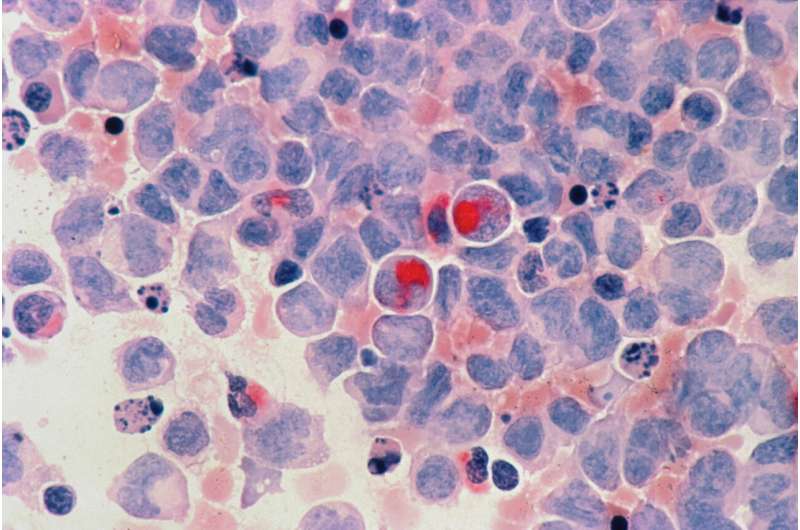This article has been reviewed according to Science X's editorial process and policies. Editors have highlighted the following attributes while ensuring the content's credibility:
fact-checked
peer-reviewed publication
proofread
Study uncovers unknown interaction between leukemic cells and immune cells

The protein STAT3 helps the immune system to recognize leukemic cells. This interaction, which is important for future immunotherapies, is now understood in detail thanks to a study at the Karl Landsteiner University of Health Sciences (KL Krems).
The study showed that STAT3 influences the formation of surface structures on leukemic cells that make them vulnerable to the immune system. If these structures are missing, leukemic cells can escape the body's innate immune surveillance. The expression of STAT3 in and the surface structures on leukemic cells could be a potential biomarker for future immunotherapies.
Acute myeloid leukemia (AML) is the second most common form of leukemia in children and the most common form in people over the age of 50. Despite good treatment options, almost half of the patients with AML relapse.
Immunotherapies, which help the body's own immune system fight the remaining cancer cells, are seen as a promising approach to improving this relapse rate. Many clinical trials focus on natural killer cells (NK cells)—lymphocytes that kill virus-infected and tumor cells.
However, AML cells are often able to evade the body's immune defense. Understanding the mechanisms responsible for this is of great importance for the success of immunotherapies.
A team from KL Krems has made an important contribution to this research field, which has now been published in Frontiers in Immunology.
Efficient elimination
"We show for the first time how STAT3 improves the elimination of leukemic cells by NK cells," explains Prof. Dr. Dagmar Stoiber-Sakaguchi, Head of the Division of Pharmacology at KL Krems and last author of the study.
This happens due to an interaction with surface structures of the AML cells called ICAM-1. Indeed, the team was able to show that AML cells without STAT3 were less efficiently eliminated by NK cells—and also had less ICAM-1.
ICAM-1—Intercellular Adhesion Molecule 1—serves as a binding site for patrolling NK cells, which is necessary for the destruction of cancer cells. If there is less ICAM-1, the NK cells cannot do their job properly.
In detail, NK cells form so-called immunological synapses with ICAM-1 on the leukemic cells. Cytotoxic molecules are then transferred to the AML cells via these connections, causing cancer cell death—a process that, according to the study, cannot take place efficiently without STAT3 and contributes to AML cells being able to evade the body's immune defense.
Strict control
To verify their findings, Prof Stoiber-Sakaguchi's team modified STAT3-deficient AML cells so that they were able to produce ICAM-1 despite the absence of STAT3. This showed that the effect of missing STAT3—inefficient elimination by NK cells—could now be compensated for: a clear indication that STAT3 in combination with ICAM-1 makes leukemic cells vulnerable to the immune system.
Further confirmation came from analyses of patient data from the Medical University of Graz. Expression of STAT3 and ICAM-1 correlated positively in leukemic cells of patients with AML, i.e. more ICAM-1 was produced in the cells when more STAT3 was synthesized.
Dr. Agnieszka Witalisz-Siepracka, first author of the study, says, "The analysis also revealed that patients with high ICAM-1 expression survived longer. Our results suggest that this might be due to more efficient elimination of AML cells by NK cells."
"We are pleased to have contributed to the understanding of how AML cells can evade the body's immune defense," says Prof. Stoiber-Sakaguchi. "Expression of STAT3/ICAM-1 may be used as a potential biomarker to individualize future immunotherapies."
More information: Agnieszka Witalisz-Siepracka et al, STAT3 in acute myeloid leukemia facilitates natural killer cell-mediated surveillance, Frontiers in Immunology (2024). DOI: 10.3389/fimmu.2024.1374068




















